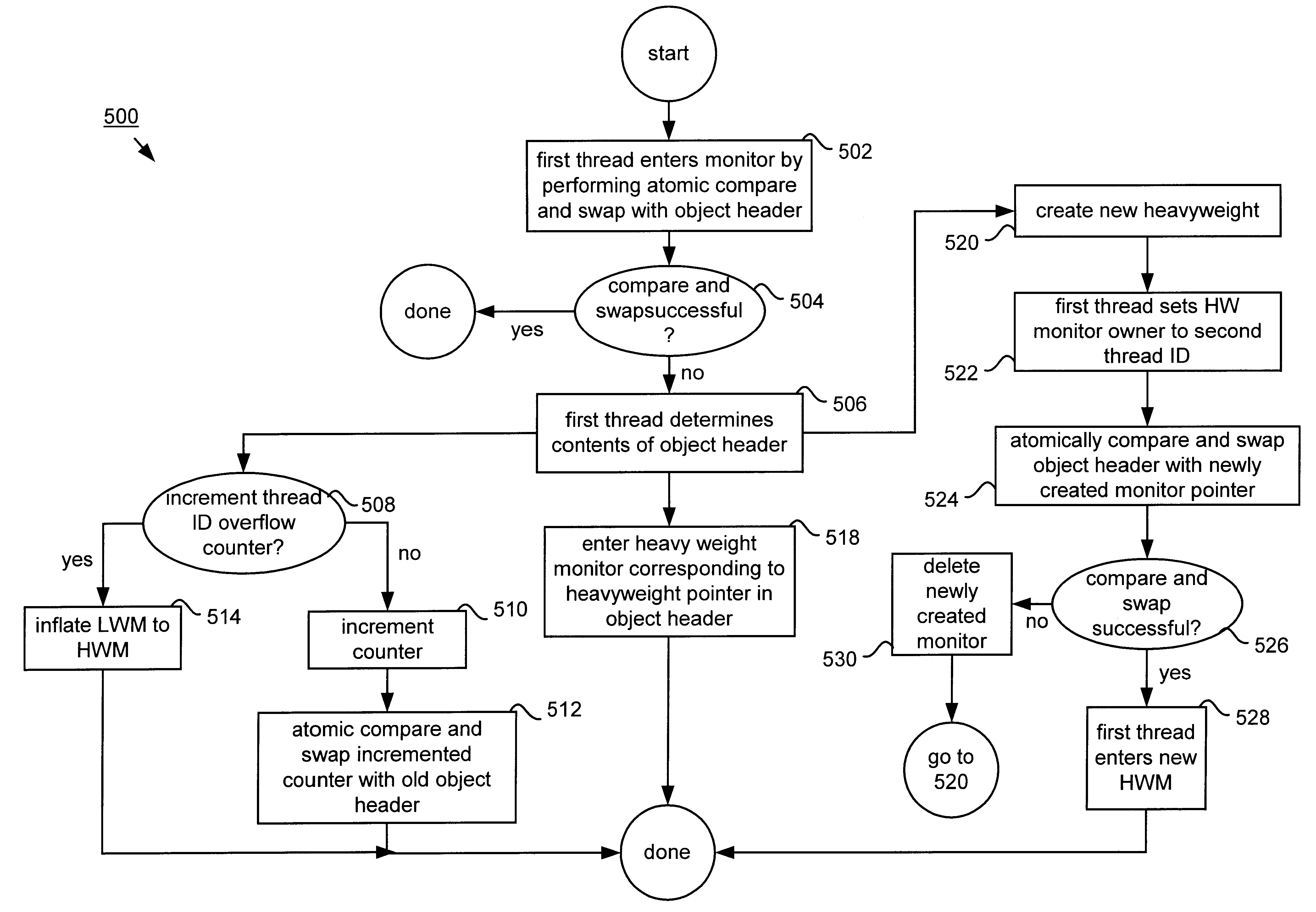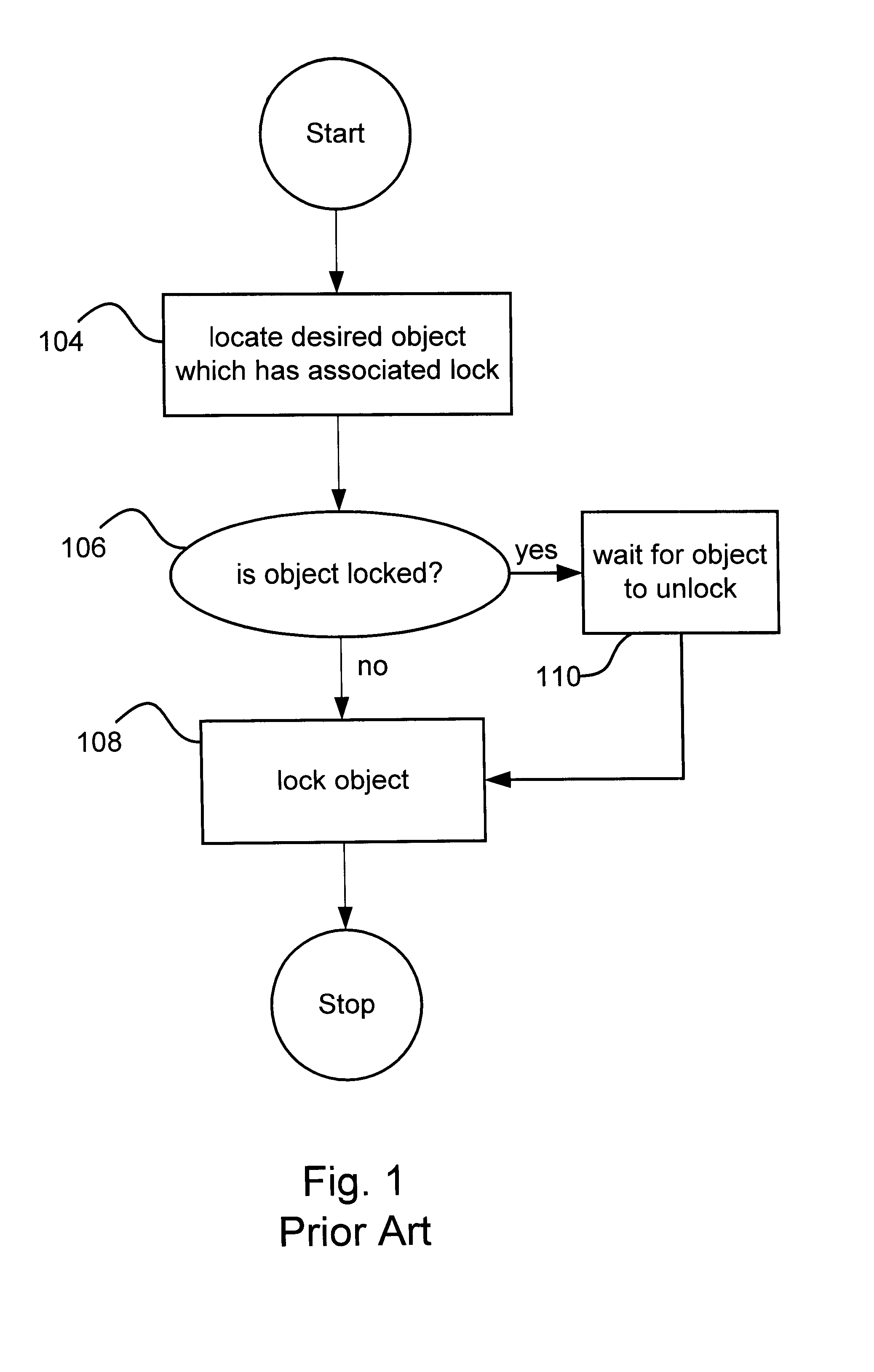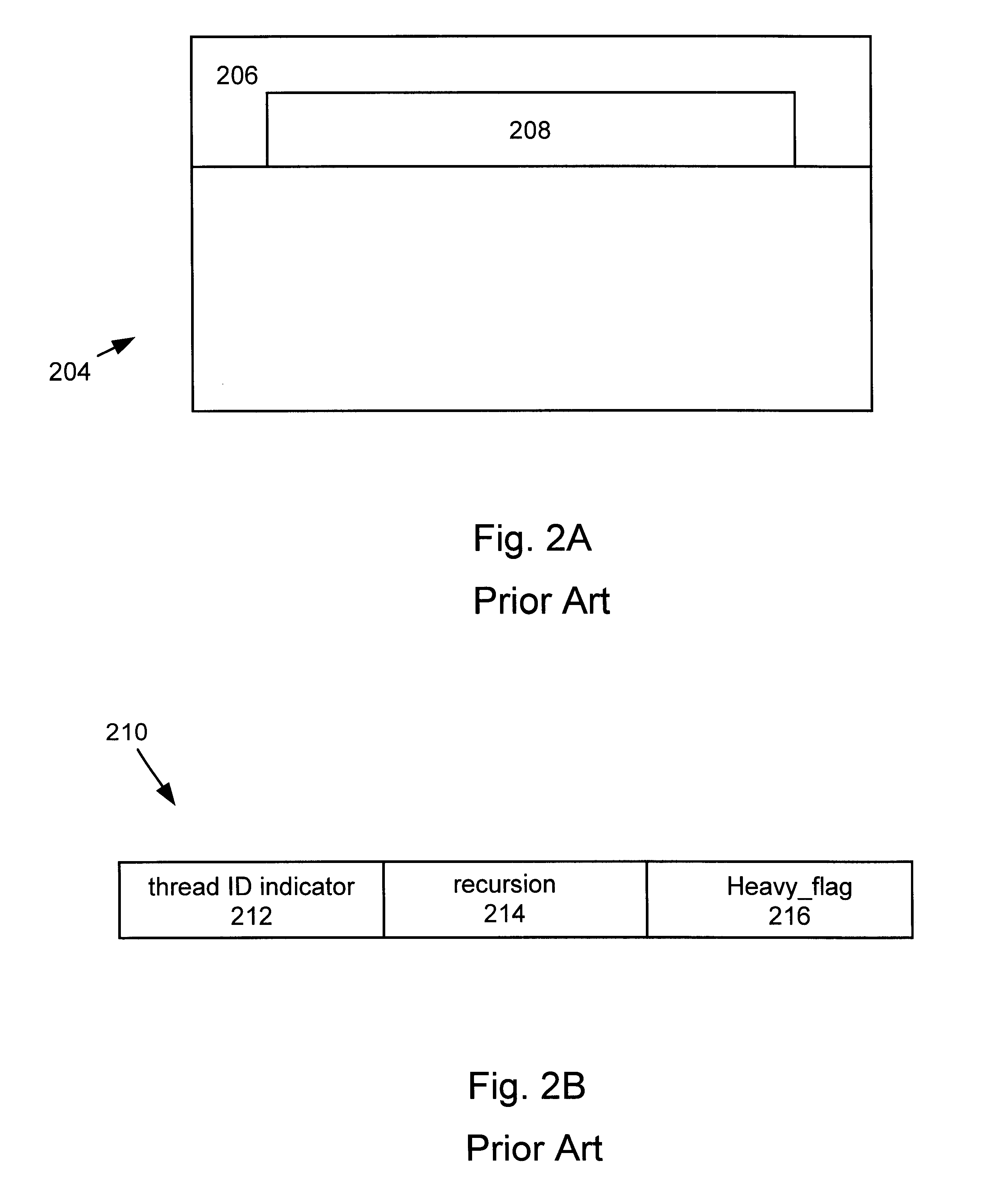Method and apparatus for converting a lightweight monitor to a heavyweight monitor
a monitor and lightweight technology, applied in the field of methods and apparatus for converting a lightweight monitor to a heavyweight monitor, can solve the problems of multiple threads to contend, inconvenient monitor lookup, and general inefficiency of space to include a monitor implementation for every obj
- Summary
- Abstract
- Description
- Claims
- Application Information
AI Technical Summary
Problems solved by technology
Method used
Image
Examples
Embodiment Construction
In a multi-threaded, object-based computing system, objects are typically provided with synchronization constructs to make it possible to prevent more than one thread from operating on an object at any particular time. One such synchronization construct is referred to as a monitor. A monitor is generally arranged such that only the thread which owns the monitor associated with an object is permitted to execute a synchronized operation on that object. Monitors may be either lightweight or heavyweight. Typically, lightweight monitors are preferable for objects that are not subject to contention, whereas heavyweight monitors are preferably used to handle contended monitor operations.
In one described embodiment of the present invention, a system that widely uses lightweight monitors is contemplated. When a first thread attempts to execute a synchronization operation on an object owned by another thread through the use of a lightweight monitor, the first thread creates a heavyweight moni...
PUM
 Login to View More
Login to View More Abstract
Description
Claims
Application Information
 Login to View More
Login to View More - R&D
- Intellectual Property
- Life Sciences
- Materials
- Tech Scout
- Unparalleled Data Quality
- Higher Quality Content
- 60% Fewer Hallucinations
Browse by: Latest US Patents, China's latest patents, Technical Efficacy Thesaurus, Application Domain, Technology Topic, Popular Technical Reports.
© 2025 PatSnap. All rights reserved.Legal|Privacy policy|Modern Slavery Act Transparency Statement|Sitemap|About US| Contact US: help@patsnap.com



